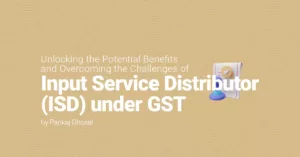By the time, we were about half an hour away from the budget, almost everyone had concluded that the Finance Minister (FM) Nirmala Sitharaman has limited bandwidth to bring in big changes. Everyone was looking at budget from perspective of direction government wants to take.
Economic Survey acknowledged the existence of a slowing economy, importance of mobilizing savings and investment to increase production, investment in infrastructure and private investment in addition to public spending for infrastructure.
Of course, all stakeholders have their sector-specific expectations from the budget. So, what remained of interest were the areas which get priority in this year’s budget, since it is almost certain that not everyone can be kept happy!
So, what did the FM deliver eventually? Allow me to summarize via my initial reaction to Union Budget 2019.
It seemed quite an extensive budget, covering almost all areas that one could expect. Starting from the target of making India a USD 5 trillion economy to encouraging processes for making ease of living and doing business in India, the FM touched upon everything in her speech.
To my liking, the FM started by mentioning about the 10 agenda points which the government laid out in the February 2019 budget and touched upon almost all the points. My initial reaction to Union Budget 2019 is that the government has approached this budget from a long-term perspective. I sense that it would be tough to measure the impact or success of this budget in a year’s time. It would probably take 3-odd years to see if this vision leads to the desired impact on economic growth or not.
The FM did not go to details of the amounts allocated in different aspects but instead, the budget laid out specific areas of focus. So much so, that the FM, only as a concluding remark mentioned about the fiscal deficit situation. This was in line with my expectations with the same.
Connectivity of India through the development of roads, rails, waterways, and airspace seems to be the big picture agenda of this government. Schemes connecting the farthest corners of India, and effective use of inland waterways to decongest road and rail traffic seems to be the philosophy.
This could in turn mean that there will be an ongoing thrust, and hence business opportunities in infrastructure sector. Railways was identified as the single biggest area of investment in the next 5 years and the FM made a specific remark for joint public-private partnership for investments in railway modernization. Another area which was identified was the development of Maintenance, Repair and Overhaul (MRO) operations in India.
Initial Reaction To Union Budget 2019: Housing, Banking Sector And NBFCs
Moving beyond infrastructure, at least the budget speech focused on certain deep impact-based long-term initiatives. To name a few, affordable housing for everyone, clean sanitation and waste management, water resource management, education and skill development, the Make In India campaign (especially with focus on medium and small enterprises) was the theme of this budget. These were the areas identified for both the rural and urban economies. This is probably the reason why I feel that the impact of this budget would only be measurable beyond a period of 3 years.
One of the key aspects was always going to be the arrangement of funds and liquidity. To this extent, the FM allowed capitalization of banks, improved liquidity of non-banking finance companies (NBFCs) by promising sovereign guarantee and a slew of other measures.
Even from the perspective of foreign direct investment (FDI), there was a clear mention of efforts being made to further liberalize the FDI policy. In fact, for some sectors such as insurance, an announcement was made in the Budget speech itself to say that FDI is being liberalized. The FM also stated about efforts to boost the NRI investment in both listed and unlisted companies. Support has been provided to Foreign Portfolio Investors by easing the KYC norms for them. Another area of keen interest to me was permission for FPI investment in debt. This could become a key source of funding, going forward, especially given what we have seen in the past, where the foreign investors have started to prefer investments in the form of debt.
In response to the changes in the announced by the FM for the NBFC sector, Mohit Aggarwal, Partner at Coinmen Capital Advisors, said:
And with the tax relaxations that have been proposed, NBFCs will now be at par with banks because interest will be charged only on Non-performing Assets (NPA) and the tax will be applicable only in the case of recoveries.
Of course, there is the critical part of long timelines involved in the recapitalization of banks and how the government will define ‘high-rated pooled assets’. It just which means we will have to look at the fine print to see how these measures will boost the sector over the years to come.”
Similarly, another expert on structured finance and debt syndication, Amit Pandey, added:
The announcement that Rs 70,000 crores would be infused in public sector banks was a big plus but we need to understand how and when this money would be utilized because there have been similar announcements of funds being infused in PSU banks, without any real action at the ground level.”As far as boosting the sentiment in the industry sector is concerned, it has been stated that there would be a credit guarantee on high-rated NBFCs. However, this will only be NBFCs which are both, highly leveraged and highly rated who would probably down sell their portfolio. The relatively smaller NBFCs carrying a ‘AA’ credit rating which are not leveraged and do not intend to sell their portfolios are not inclined to reap benefits from this scheme. For instance, the likes of Hero and Piramal who are not likely to sell their portfolio and finding it difficult to borrow would not be benefiting as opposed to DHFL and Indiabulls which are highly leveraged.
Apart from these two, I did not see any major announcements for the banking sector. However, the regulatory shifting from NHB to RBI was the right decision as it ensures operational ease with one apex regulatory body. NHB was unnecessarily regulating one set of NBFCs and the other being regulated by RBI operational ease. The additional incentives of Rs 1.5lakh given under affordable housing on the income tax would further improve the money and inventory circulation in the real estate sector.”
Initial Reaction To Union Budget 2019: Electric Vehicles, Start-ups And Angel Tax
The electric vehicle segment got a shot in the arm. Reductions have been proposed in custom duty rates for certain components of EV. In addition, tax deduction on interest payments on loans taken for purchase of EV has also been granted.
There was much to cheer for start-ups. There could be a TV channel launched for a start-up, where all areas of start-up ecosystems including fund raising, tax planning, etc. could be discussed. The biggest relief came in the form of the resolution of the angel tax issue. I have, in one of my earlier notes on tax issues pertaining to start ups, mentioned that there has to be a system of identification of good investors allowing lesser scrutiny for investments made by such investors.
In her tax proposals, the FM made it clear that now investors and start-ups would provide certain information about the investor and investment in the return form, and no further scrutiny may happen. Even for ongoing litigation, steps would be taken to finish the litigation with minimum possible impact on any stakeholder. In addition, conditions for carrying forward of tax losses have been eased in case of start-ups.
Initial Reaction To Union Budget 2019: Taxes – Direct Taxes And GST
On the direct tax side, I must admit that it was to my surprise that incentives were doled out. Reduced corporate tax rate of 25% will now be available for corporates having turnover of less than Rs. 400 crores as against to Rs. 250 crores earlier. Further, investment linked incentives are being made available to companies setting up manufacturing plants for semiconductors, PV cells, lithium batteries, solar charging infra, etc.
On direct tax administration side, there is a clear effort to adopt digitization as the way forward. A scheme has been framed for faceless assessment. Under this scheme, the tax officer and taxpayer will not need to see each other, and the entire assessment will operate through a central agency. The cases will be randomly distributed to tax officers and taxpayers will not know the officer who they are dealing with. In addition, providing pre-filled tax return with information about salary, capital gains, etc. should facilitate increase in the tax base. Another aspect, for which the fine print would need to be read, is the increase in threshold for invoking certain anti-abuse provisions.
On the GST front, the FM made announcements for further easing of the process, some of which included the pre-filled GST return, consolidation of monthly returns into one, automated GST refund mode, etc. In terms of resolutions of disputes arisen in the era before GST, there will be a legacy dispute resolution scheme, which will allow taxpayers to settle disputes.
To fund some of the incentives and investment plan, additional surcharges have been introduced for individuals having annual taxable income of more than Rs. 20 million. Further, an additional cess and tax has been levied on petrol and diesel.
In all of the above, one important area, where I felt that the FM did not make any mention of was healthcare. Launching an ambitious plan of a nation-wide insurance scheme, the healthcare industry was hoping for more details, which did not come through.
All in all, the budget as expected, is directional in nature. Like always, execution will remain a challenge. The above is my initial reaction to Union Budget 2019, since we still need to read the details to find the devil. I would keenly watch the specific schemes getting implemented, investments getting promoted, projects getting launched, easier access to credit, etc.
So now, fingers crossed!
Written By Nitin Garg
As one of the founding partners at Coinmen Consultants LLP, Nitin currently heads the Corporate and International Tax practice for the firm.
Note: Views presented in the article are of the author and not the firm.










